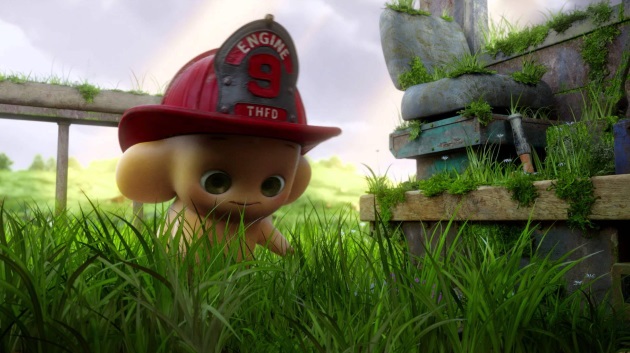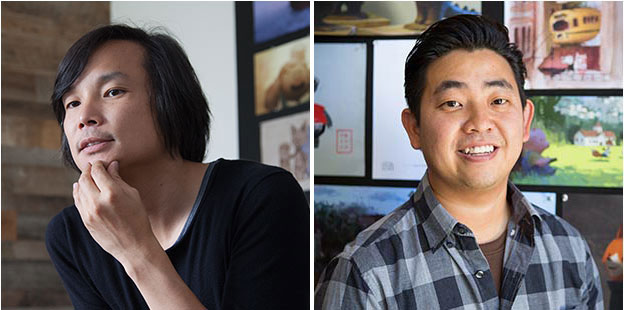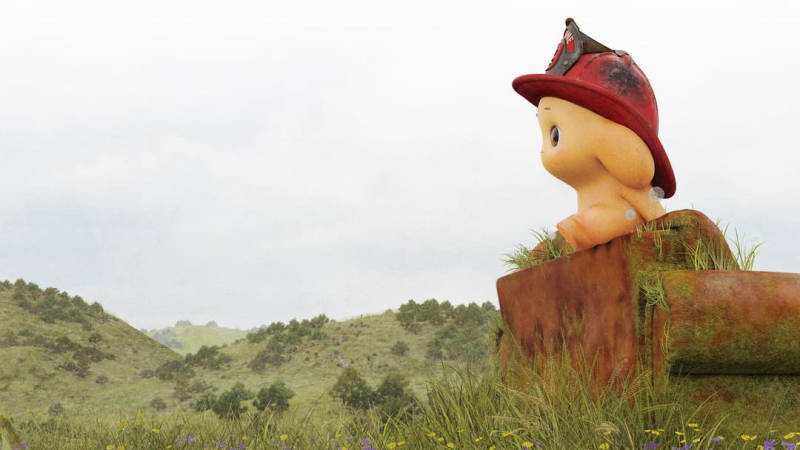There’s a scene in The Dam Keeper, the Oscar-nominated animated 2014 short film from Berkeley’s Tonko House Studios, in which poor Pig gets stuffed into a toilet in the school bathroom by a pack of nasty ogre-faced bullies. But when the quick-witted Fox comes in and sees Pig’s little feet under the stall, a gentle piano figure starts to build. As light creeps into the dark, gray bathroom, the two characters begin to sketch pictures of the sinister punks, laughing giddily all the while. Suddenly, a huge string section hits with gale-force strength, and the dingy bathroom becomes fully illuminated in a gorgeous glow.
While the scene flows effortlessly, built with emotional precision, its construction was anything but simple. In fact, its dynamics and pace aren’t even solely the work of the film’s directors. Instead of adding music to an existing scene, the score itself had actually formed the scene — which was painstakingly repainted by hand once the directors heard the music.

This back-and-forth dance between picture and music, which courses its way through the film, is at the heart of the relationship between Tonko House’s Dice Tsutsumi and Robert Kondo — both Pixar art director veterans — and their musical partners Zach Johnston and Matteo Roberts, who’ve both been involved with the indie-rock ensemble Phox. Their collaboration is built on the idea that a film’s music and its picture do not need to be constructed independently, and instead can feed and inspire each other. But such a process is also insanely tedious; Johnson told me that in the course of their collaborations, some scenes are re-scored 10 times. “Even if you get it right,” he explains, “the timing might change.”
Yet that tedium hasn’t stopped Johnston and Roberts from teaming up again with Tonko House for their upcoming second release, Moom, which premiered at San Jose’s Cinequest Film Festival earlier this month. “When we started Moom, we didn’t even think about anyone else [to write the score]. [It became] a long journey of them trying to hit the feeling while we were still trying to get feeling for the film,” Tsutsumi says. “I don’t think every composer would be able to do that.”
While The Dam Keeper’s characters and plot line were easy enough to follow without words, Moom’s narrative is far more abstract. Based on a Japanese children’s book of the same name, Moom explores the challenges and importance of how we let go of memories and accept changes in our lives.

In the film, memories manifest themselves in the form of giggling 3D balloon-like characters, who then in turn spend their days releasing other memories that have washed up in the pastoral wonderland that they inhabit with an unnamed (and unexplained) astronaut. The astronaut wears a clunky space suit with an American flag, trains surface majestically out of a lake, memories pop out of ballet slippers, an ensemble of jittery memory blobs form an impressive jazz combo, and the bright yellow title character laps it all up with wide-eyed glee.


